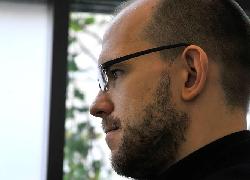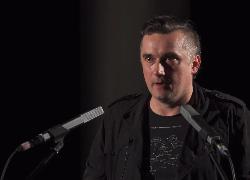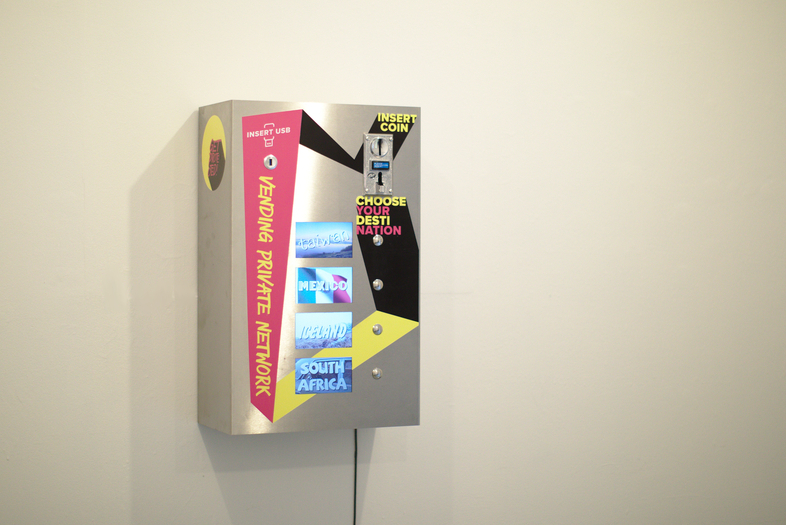1 Websites are places. They provide services and social environments. Like architecture, they distribute access and atmospheric context to these resources: Watching a video on Nowness is different from watching a video on YouTube.
2 Websites are inherently public. Architecture is by nature a public discipline. Both buildings and websites are built realities. They are part of the fabric of societies that are now both physical and virtual.
3 Websites are inhabited. They become part of societies through the interactions they enable. They are homes to communities, to thoughts and approaches. They may be privately owned and operated, but inhabited and used by the public. As buildings, websites are where we spend our lives.
4 Websites are local, despite their distributed nature. Websites adhere to culturally established patterns, languages and user expectations in similar ways architecture does. Buying an onigiri from a 7-11 branch is different from buying a pretzel from a Bavarian bakery.
@Evgeny Morozov, 2015
( par Culture Mobile )
Centralisé par un groupe d'acteurs
Internet est pensé comme l'intermédiaire de tout
Tous les maux lui incombent
Le solutionnisme induit des solutions techniques par elle-même
Une possible correction des problèmes par et pour la technique fork
@Aram_Bartholl 2010
blog :
https://arambartholl.com/blog/dead-drops-preview/
map :
https://deaddrops.com/db/
"I am pleased to preview ‘Dead Drops’ a new project which I started off as part of my ongoing EYEBEAM residency in NYC the last couple weeks. ‘Dead Drops’ is an anonymous, offline, peer to peer file-sharing network in public space. I am ‘injecting’ USB flash drives into walls, buildings and curbs accessable to anybody in public space. You are invited to go to these places (so far 5 in NYC) to drop or find files on a dead drop. Plug your laptop to a wall, house or pole to share your favorite files and data. Each dead drop contains a readme.txt file explaining the project. ‘Dead Drops’ is still in progress, to be continued here and in more cities. Full documentation, movie, map and ‘How to make your own dead drop’ manual coming soon! Stay tuned."
↳https://criticalengineering.org/projects/vending-private-network/ ( site )
↳https://julianoliver.com/projects/vending-private-network/ ( JOliver )
à propos de Vending Private Network VPN
In this talk, @Danja_Vasiliev gives an overview of "dark internet topologies" in the context of the commissioned piece //Vending Private Network// he did together with @Julian_Oliver ( 2018 )
Conf
Cite cette carte des câbles sous-marins :
https://www.submarinecablemap.com
Are.na ( adhoc_mesh_ntwrk )
https://www.are.na/vincent-bonnefille/adhoc_mesh_ntwrk
Membre du https://criticalengineering.org
@The_Critical_Engineering_Working_Group
2022 EDIT
- Submarine Cable Map 2015
https://submarine-cable-map-2015.telegeography.com/ - Traceroute mapper ( tool git )
https://stefansundin.github.io/traceroute-mapper/?trace=traceroute%20to%2083.118.202.51%20(83.118.202.51)%2C%2030%20hops%20max%2C%2060%20byte%20packets%0A%201%20%20livebox.home%20(192.168.1.1)%20%204.040%20ms%0A%202%20%2080.10.253.25%20(80.10.253.25)%20%209.688%20ms%0A%203%20%20*%0A%204%20%20*%0A%205%20%20ae51-0.nridf101.rbci.orange.net%20(193.252.98.94)%20%2012.098%20ms%0A%206%20%20*%0A%207%20%20*%0A%208%20%20*%0A%209%20%20*%0A10%20%20*%0A11%20%20*%0A12%20%20*%0A13%20%20*%0A14%20%20*%0A15%20%20*%0A16%20%20*%0A17%20%20*%0A18%20%20*%0A19%20%20*%0A20%20%2051.202.118.83.in-addr.arpa.celeste.fr%20(83.118.202.51)%20%2010.492%20ms%0A - History souces

@Vox reportage
In Cuba there is barely any internet. Anything but the state-run TV channels is prohibited. Publications are limited to the state-approved newspapers and magazines. This is the law. But, in typical Cuban fashion, the law doesn't stop a vast underground system of entertainment and news media distributors and consumers.
- On le retrouve dans le Cinéma Pirate Book :
http://thepiratebook.net/el-paquete-semanal-cuba/




